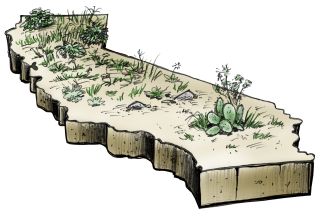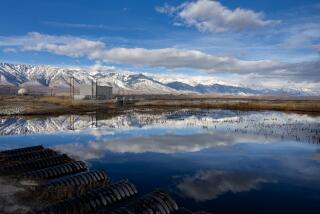Los Angeles DWP loosens watering rules to three days a week, citing wet winter

- Share via
More than a year after instituting the strictest water conservation orders Los Angeles has ever seen, the L.A. Department of Water and Power announced Monday that it was loosening watering rules for its 4 million customers.
Effective immediately, all Angelenos can return to three-day-a-week watering schedules after being placed on two-day-a-week limits in June 2022, the agency said.
Officials attributed the change to this year’s wet winter, which boosted supplies and replenished reservoirs that had been drained by three years of severe drought.
“We want to thank our customers for continuing to lead on conservation and helping us exceed our water conservation goals,” Anselmo Collins, DWP’s senior assistant general manager of the water system, said in a statement. “Over the past year, Angelenos reduced their water use an additional 10%, which is a remarkable achievement considering this was on top of the substantial long-term water conservation our customers had already achieved.”
As California drought worsens, the DWP in Los Angeles will limit outdoor watering to two days a week, with watering capped at eight minutes per station.
Prior to the change last June, Angelenos had been under a three-day-a-week ordinance since 2009. The city’s return to the less restrictive phase of its Emergency Water Conservation Ordinance means customers with street addresses ending in odd numbers can water on Mondays, Wednesdays and Fridays, and customers with even-numbered addresses can water on Tuesdays, Thursdays and Sundays.
Watering must be done before 9 a.m. or after 4 p.m. “when the evaporation rate is appreciably lower than during the middle of the day,” the agency said. Hand watering is allowed every day during those hours if the hose is equipped with a self-closing water shut-off device.
Last year’s tightened rules were issued amid the driest three years ever recorded in California, which spurred a statewide drought emergency and a call from Gov. Gavin Newsom asking that urban residents voluntarily cut back by 15%.
The Metropolitan Water District of Southern California — the massive wholesaler that supplies the DWP and dozens of other agencies in the area — declared its own water shortage emergency last year and placed 6 million people under unprecedented restrictions, including one-day-a-week watering limits in many areas. The MWD rolled back that order in March.
Despite its change, the DWP said water conservation continues to be a priority. Outdoor watering is still limited to eight minutes per station on permitted watering days, or 15 minutes twice a day with sprinklers that use water-conserving nozzles.
Watering continues to be prohibited within 48 hours of a measurable rain event, and hosing down driveways and sidewalks is not permitted. No water should leak from a pipe or fixture and no water should flow off of properties, the DWP said.
“We encourage all Angelenos to keep saving water wherever possible, while we continue to invest in developing our local water supplies to adapt to our changing climate,” Collins said.
Diamond Valley Lake — a backbone of the region’s water storage system — should refill to its full capacity by the end of this year, officials said.
Gregory Pierce, director of the Water Resources Group at UCLA, said reverting from two days back to three is “reasonable as a short-term measure.” But he warned that as global conditions continue to get hotter and drier, residents probably shouldn’t get used to the more flexible schedule.
“I would prefer if the language were more like, two days is what you should expect — it’s going to be more common in the future — but we can allow three in the short-term because of this unusual water year,” Pierce said. “I’d prefer the framing of two days as default, three as exceptional.”
Indeed, forecasters say 2023 may be one of the hottest years ever recorded — if not the hottest — and that 2024 will be even hotter because of global warming and the arrival of El Niño.
What’s more, the Colorado River — a water lifeline for California and the West — has lost about 32.5 million acre-feet of water since 2000 because of climate change and remains perilously low. This year, California, Arizona and Nevada agreed to significantly reduce their use of that water in the coming years.
The DWP said it will continue to patrol the streets of Los Angeles to enforce its watering restrictions. The agency also offers incentive programs for turf replacement and water monitoring devices to help residents reduce their use, officials said.
But while Californians made a significant effort to conserve during the most recent drought, they ultimately fell short of Newsom’s 15% goal. Between July 2021 and March of this year — when the governor rescinded his request — statewide savings were about 7%, or about 9 fewer gallons per person per day, a Times analysis found.
More to Read
Sign up for Essential California
The most important California stories and recommendations in your inbox every morning.
You may occasionally receive promotional content from the Los Angeles Times.













